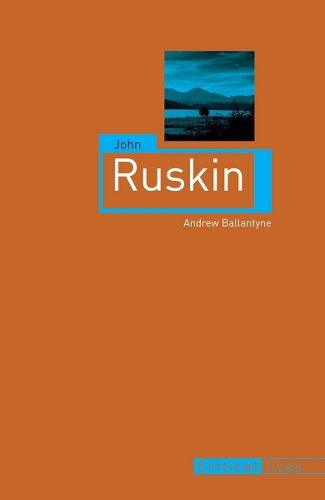
John Ruskin
Publishing Details
John Ruskin
By (Author) Andrew Ballantyne
Reaktion Books
Reaktion Books
1st August 2015
United Kingdom
Classifications
General
Non Fiction
The arts: general topics
700.92
Physical Properties
224
Width 200mm, Height 130mm
Description
John Ruskin (18191900) was the most prominent art and architecturecritic of his day. His books, pamphlets and letters to the press had an influenceon all classes of society, from road-menders to royalty, and he stillmaintains a popular reputation today, though he is remembered less forhis views than for his failed marriage to Effie Gray, who left him for thePre-Raphaelite artist John EverettMillais. Frequently imagined as a Victorianprude, there was far more to Ruskin than this derisory description suggests.
Reviews
Shortlisted for the Ruskin Society Book Prize 2015 * Award *
It is good to have a new book about John Ruskin that is short, informative, and accessible . . . Architectural historian Ballantyne sets out the essentials of Ruskins life the early years with his adoring parents, the notoriety of Modern Painters, the disastrous marriage to Effie Gray, the commitment to museums and workers education, the Whistler suit, and the final mental collapse while providing authoritative analysis of his connection to picturesque theory, Turners genius, the Pre-Raphaelites, and the Gothic Revival . . . Overall, an attractive, well-written introduction to the life and thought of one of the great Victorians . . . Recommended. * Choice *
One of the objectives of the Ruskin Society is to make the life and work of Ruskin more widely known in the world beyond Ruskinian circles. That too has been Andrew Ballantyne's objective in this compact, lucid and accessibly written volume in which he analyses the life and work and highlights the relevance of many of Ruskin's ideas to the present, arguing that 'at his best he addresses fundamental issues about the world and our relationship with it, and with one another. * Jeffrey Richards, President of the Ruskin Society and Emeritus Professor of Cultural History at Lancaster University *
Author Bio
Andrew Ballantyne is Professor of Architecture at Newcastle University. He has written extensively on architectural history and theory. His books include Architecture: A Very Short Introduction (2002) and, with Andrew Law, Tudoresque: In Pursuit of the Ideal Home (Reaktion, 2011).
